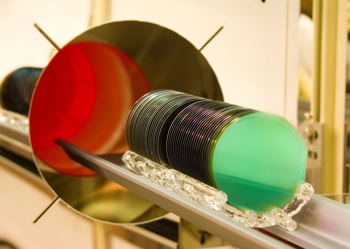The US semiconductor specialist Cree has announced what it claims in the first commercial silicon carbide (SiC) power Mosfet (metal-oxide-semiconductor field-effect transistor) device which, it says, could lead to a new generation of high-efficiency inverters operating with low switching losses at extremely high frequencies.
According to Cree, its new device can halve switching losses compared to silicon Mosfet devices. Compared to the best silicon IGBTs, the devices will improve system efficiencies by up to 2% and operate at switching frequencies up to three times higher. The higher efficiencies will result in lower operating temperatures, and should therefore improve reliability.
“Silicon carbide technology is critical to developing the next generation of advanced, energy-efficient power electronic system designs,” explains Cree vice-president Cengiz Balkas who is general manager of its power and RF business. “We believe that the addition of the industry’s first commercial SiC Mosfet will speed the development of smaller, faster, lighter and more efficient power devices in certain critical power device applications, with the potential to reduce global electric power consumption.”
Initially, Cree expects the SiC Mosfets to be used for HV applications where energy efficiency is critical, such as solar inverters, HV power supplies and power conditioning. In the future, applications could also expand to variable speed drives, electric vehicles and wind turbines. The market for power semiconductors for these applications is worth around $4bn today, and is forecast to reach nearly $6bn by 2015.

In solar inverters, the SiC Mosfets can be used in both the boost and inverter sections of the DC-to-AC converters. They can reduce switching losses by more than 30% and, when used with SiC junction barrier Schottky diodes, can achieve system efficiencies above 99%.
The Mosfets can be used with the Schottky diodes to develop “all-SiC” high-power switching circuits and systems with levels of efficiency, and reductions in size and weight that are not possible with similarly-rated silicon power devices.
Cree expects SiC power components eventually to replace silicon devices in most critical power electronics applications with breakdown voltages of 1.2kV or higher.
“This introduction of our SiC power Mosfet represents many years of materials research, process development and device design,” says John Palmour, Cree’s co-founder and chief technology officer for power and RF. “But the end-result is that the industry’s first ‘ideal’ high-voltage switching device is no longer a future technology – it is commercially available and ready for design-in today.”
According to Per Ranstad from Alstom Power Thermal Services in Sweden, the SiC Mosfet “represents a major step forward in power technology” which will “enable a new standard in performance and reliability to be reached”. Alstom has been working with Cree to demonstrate the capabilities of the new device – in particular, looking at its impact on power system efficiencies. “We are definitely excited by the results we have achieved to date,” Ranstad reports.




